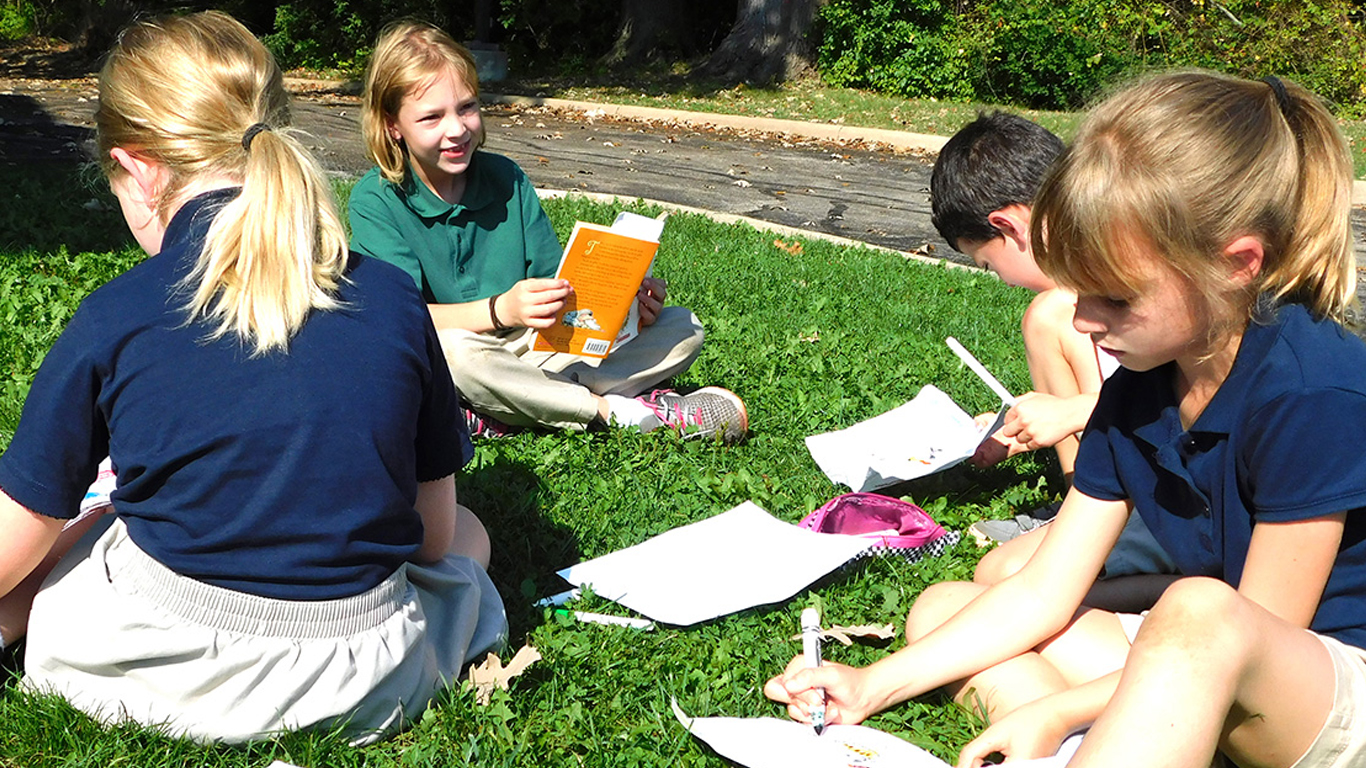The topic of my talk at the Association of Classical Christian Schools’ Repairing the Ruins national conference in June was “Directing Affections to Beauty.” One of the primary goals of Classical Christian Education is to direct the affections of our students to love the highest things. We say that we desire to orient the affections of our students toward the transcendentals (Truth, Goodness, and Beauty), so that their affections will be directed to God. When starting out as a new teacher, I found this a rather confusing and vague charge. I loved (and continue to love) the vision to direct students’ loves: to not just give them the mediocre things they were already attuned to, but to help them love the best and the highest things. The challenge for me, and many new classical teachers, was with the practicalities.
This talk at the ACCS conference was designed to help teachers understand how they can practically direct the affections of their students to beauty specifically. The hope was that by spending some time at the conference thinking about how to direct affections to beauty, these teachers would be able to extrapolate how they could do this for the other transcendentals as well.
The first step in directing affections to the transcendentals seems mind-numbingly obvious. The first step is that the teacher must believe in the transcendentals. We can define “believe” as “To recognize the eternal truth and/or existence of something (which is true regardless of the belief of the observer) and to act in accordance with that recognition.” Notice that there are two aspects to this definition: recognition and action.
We say many times and will say many more times, “The caught curriculum is just as important, if not more so, than the taught curriculum.” And, “The Teacher is the Curriculum.” If the teacher believes in beauty (in the sense of recognition along with appropriate action) in front of a student, the student will have their affections oriented toward beauty. What the teacher loves in front of the student is what the student will love. So, the first step is simply for the teacher to believe (recognize and act in accordance with that recognition) in beauty.
This naturally leads to the question “What, exactly, must be believed?” The teacher must believe (recognize and act) in accordance with this truth: Beauty is real, it finds its source in God, and humans can recognize it even while they struggle to define it. What, then, is beauty? It is incredibly hard to define, which is a talk in itself, but perhaps this can suffice for want of something better: Beauty is a manifestation of the glory of God in our world, whether in action, language, creation, or craft.
Having clarified that first and foremost that the teacher is the curriculum and that having a teacher who believes in beauty is the primary concern, I also laid out four practical tasks for educators who desire to direct affections to beauty:
- Task 1: Create beautiful spaces and environments for our students. In his book, Surprised by Hope, NT Wright says the following: “The shoulder-shrugging functionalism of postwar architecture, coupled with the passivity born of decades of television, has meant that for many people the world appears to offer little but bleak urban landscapes, on the one hand, and tawdry entertainment, on the other. And when people cease to be surrounded by beauty, they cease to hope. They internalize the message of their eyes and ears, the message that whispers that they are not worth very much, that they are in effect less than fully human.” The environment in which our students live, study, play, eat, worship, and grow will shape what kind of humans they will become. As the keepers of that space, we have a critical responsibility to ensure it is a beautiful one.
- Task 2: Revel in beauty. Worship God and praise His creation with our students. G. M. Hopkins’ poem “Pied Beauty” contains these words: “glory be to God for dappled things.” Hopkins took time to look at the world around him, to really look at it, and to revel at the glory that God has placed in it. The task of a Christian educator who desires to direct affections to beauty is to look for beauty, draw the eyes of their students to that beauty, and praise God for His good gift of it.
- Task 3: Attend to the Little Things. If you look at the ceiling of a medieval cathedral, you will notice intricately and delicately carved details located 50 or 60 feet above the ground where practically no one would ever see them. Why were these placed there? Why did craftsmen give countless hours of time to chiseling them out of stone when no one would see them? Because these people loved beauty and they did it as an action of vocational worship of God. Students notice the effort we put into awards, powerpoint presentations, neatly arranged shelves, and window dressings. These little things frequently have the biggest impact, especially when it comes to conveying a belief in beauty.
- Task 4: Require beautiful work. Every teacher is familiar with the phrase “I’m finished, I’m done early!” The hard work for the teacher often comes after that: what to have that student do while the other students are all still working? Our Christian heritage of illuminated manuscripts should point out to us that, even though that student may have finished the requirements of the task at hand, they can still take the time to make their assignment lovely. One response the Christian teacher who believes in beauty can and should use is “Great job finishing this, now go and imitate your Creator by creating some beauty in the margins.”
May we fill our lives with more truth, goodness, and beauty to the glory of Jesus Christ!







